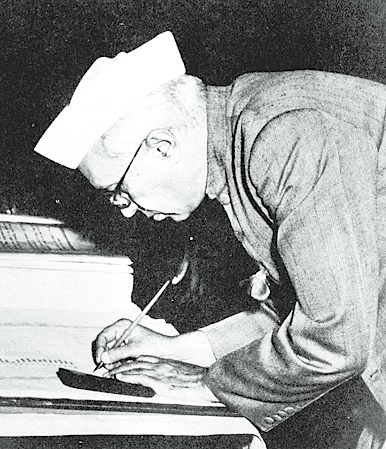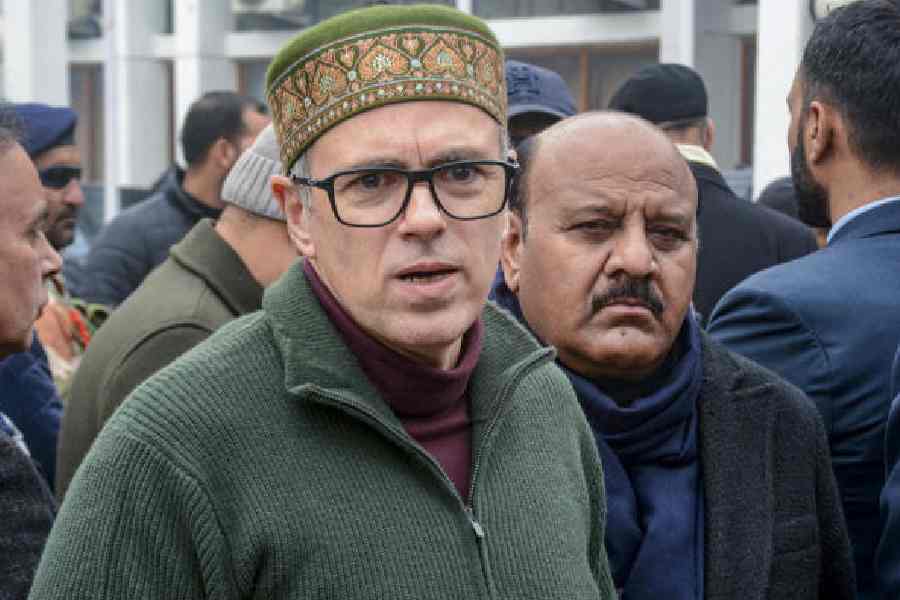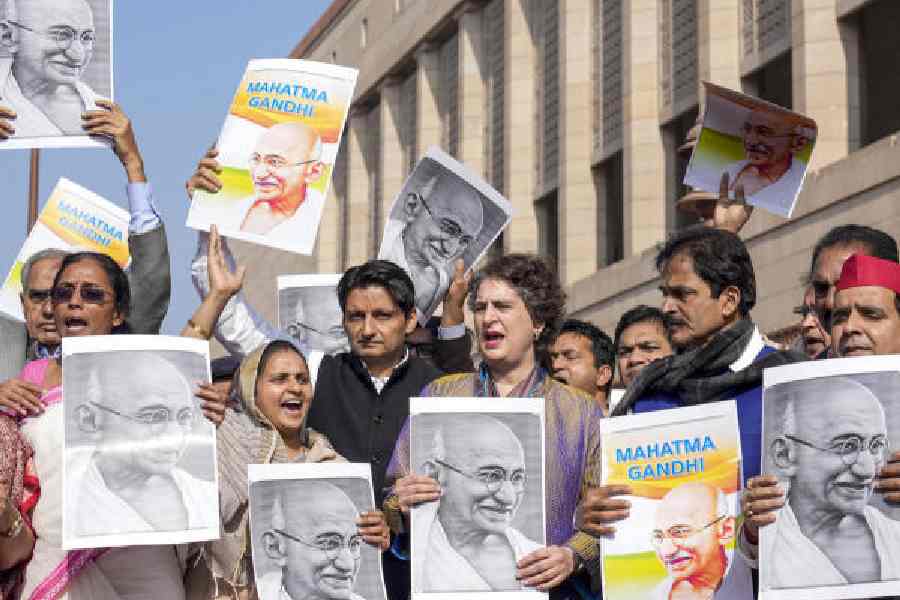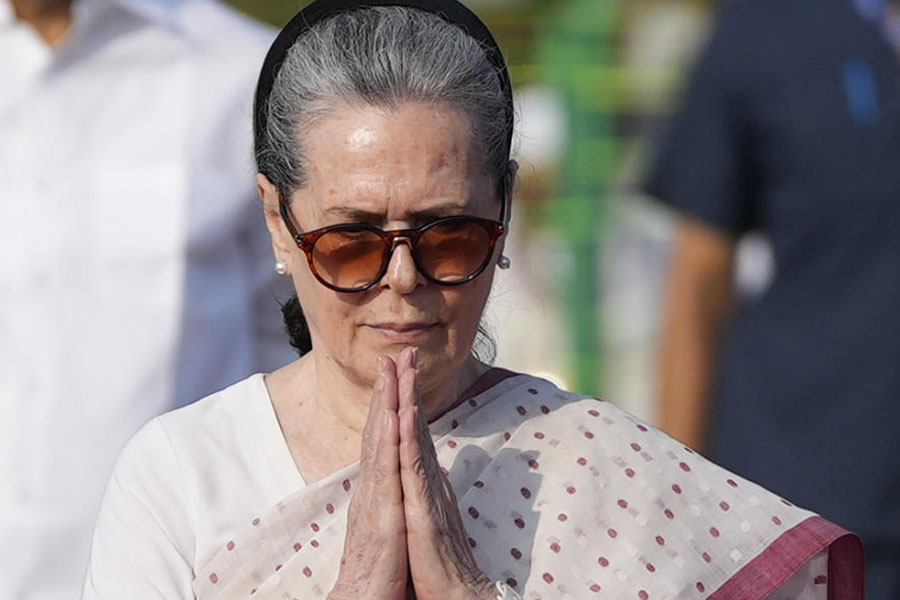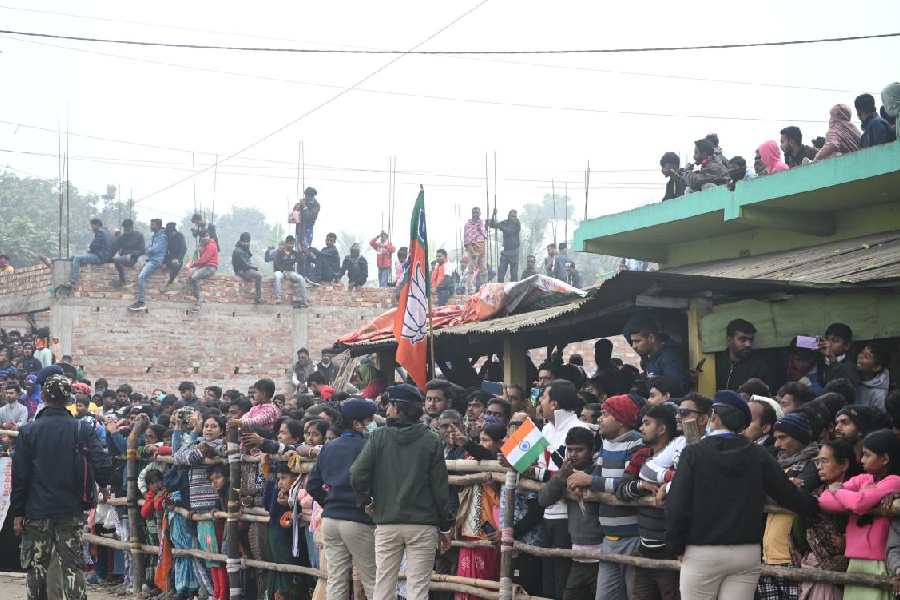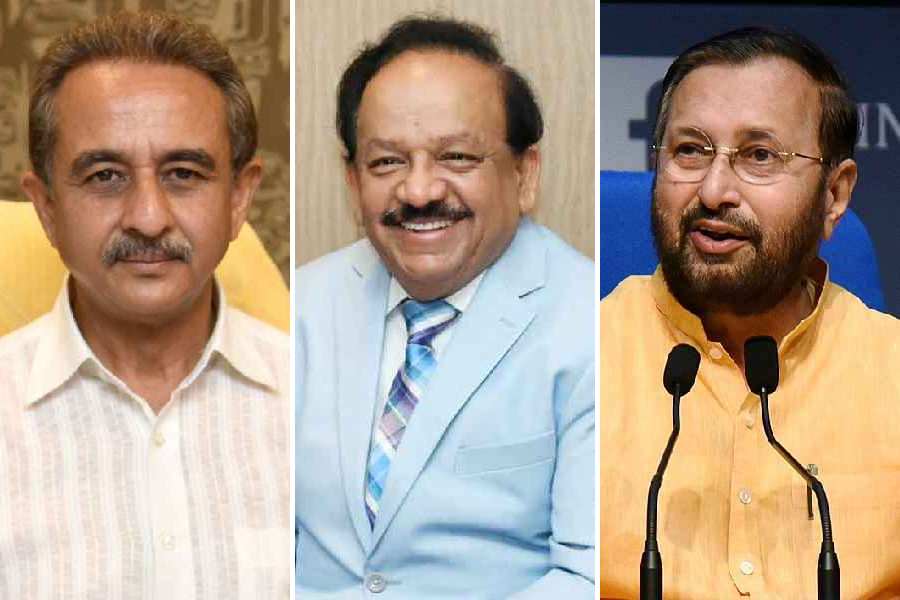
One of the 'exhibits' in Soumya Sankar Bose's exhibition ( Full Moon on a Dark Night) - it is on view at the Experimenter gallery till June 30 - does not strictly adhere to the contours of the visual medium. It is a tape - playing in a loop - an aural record of the rather grim experiences of Vaishali, who, the listener learns, is a lesbian. Among other things,Vaishali talks of the humiliation she faced in school after her love for another girl became public, her grief at the untimely death of a supportive sister, her mother's rejection of her, her confusion with her sexuality and, also, her fervent desire for anonymity while chronicling her life. Vaishali bares the most intimate details of her troubled life to her audience; yet she remains invisible to them. This longing to remain anonymous and, simultaneously, revelatory, and the conditions that produce such a splitness seem to be of fundamental interest to Bose.
Perhaps that is why we see, in some of these images, the presence of costumed figures. Pradipta and Rabbit (picture, above) is one example; Subir and Rudro is another; a naked bulb, as if bursting into light, is not enough to identify who the people really are in the latter image. Bose, seemingly, has the confidence to let viewers freely interpret what they see. This is encouraging, given the predisposition of some artists to be anxious about the interpretation of their art. One way of looking at the photographs with the protagonists in costume is to imagine the space and lives documented as some kind of a dreamscape. But is the donning of costumes innocuous? Is the act not satirical, or even a kind of subversion or resistance? Can the costumes and the dreary settings be reimagined as both means and sites of personal liberation? While examining the two figures in Subir and Rudro, it is possible to be reminded of Vaishali's desire to become someone else. These yearnings that Bose examines are by no means rare. In fact, they reflect the lines of enquiry in other artistic projects. But given the lopsided battles being waged - heroically - by sexual minorities and twilight communities, it is important to keep raising similar questions, as Bose has done here.

Power, more so its asymmetrical dimensions that are played out within relationships, is the all-too-obvious subject of enquiry here. But the identification of the anomalies depends on perspective - the human gaze, that of the photographed and the photographer. Pradipta and Rabbit is an instance of Bose's fascination with the intersection of unequal gazes. Is the person in the guise of the rabbit envious of his companion who remains unencumbered by the trappings of livery? But it may not be that simple.The costume could well be the medium of a metamorphosis which, it is hoped, would erase the stain of prejudice. Then, there are the two adjacent frames: one of them features a man - he is standing in an open space, his body partially covered in a black cloth - looking out at the zoo tiger in the other photograph that, apparently, returns the gaze. These two photographs are suggestive of the blurring of boundaries, challenging lay notions of freedom and entrapment. For the man and the beast are caged creatures notwithstanding their contrasting settings.
The symbolism that is apparent in Bose's works - Subir at Mandarmani is another example (picture, above) - is neither original nor innovative. Empathy is the reason for the gentle light that is shone on lives in the dark. But the tonal quality of this light is mellow. The world under Bose's lens does not quite have the 'full moon' of the title; but it is as dark as the night alright.

